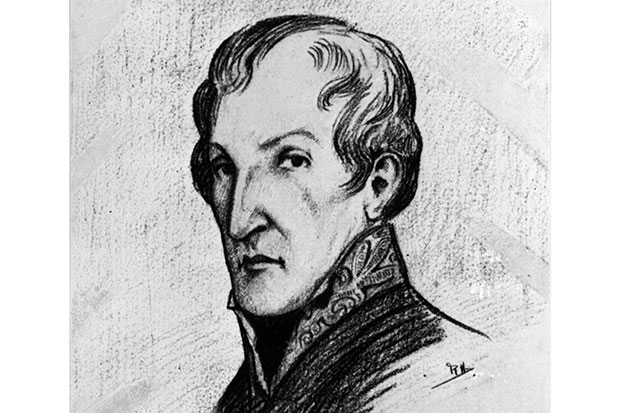On 25 July 1865, during a heatwave, Dr James Barry died of dysentery in his London lodgings. A charwoman came in to ‘lay out’ the body. She had known the deceased gentleman: a strange-looking fellow, about five feet tall, slight and stooped and with a large nose and dyed red hair. But nothing had prepared her for what she found when she folded back the bedclothes. Barry’s whole body — ‘the genitals, the deflated breast and the hairless face’ — was unmistakably female. And as if that wasn’t shock enough, the charwoman’s eye was drawn to pronounced striations in the skin of the belly. As a mother of nine, she recognised them immediately as the marks of childbearing.
James Barry was born Margaret Anne Bulkley in about 1789 in Cork, where her father, Jeremiah, made his living as a grocer. Destined either for marriage or to be a governess, she was given minimal education. Then, while she was still a teenager, it seems that she was raped — possibly by a ne’er-do-well uncle — and fell pregnant. Jeremiah and his wife, Mary Ann, passed off the child, Juliana, as their own, but the grocery business was increasingly precarious, and when Margaret was about 17 she and her mother moved to London. Our last sighting of Jeremiah is on a convict ship bound for New South Wales — and what became of poor Juliana history doesn’t relate.
In London, Mary Ann had a brother, James Barry, a Royal Academician and painter of some note. A true eccentric, he lived in squalor, but when he died in 1806 he left his sister and niece enough money to set themselves up. He had also introduced them to his circle of friends, including the Venezuelan exile General Francisco de Miranda and David Steuart Erskine, the Earl of Buchan. Both of these were impressed by the intelligence of young Margaret, and it may well have been Miranda who helped her to conceive her next bold step.
By 1809, Margaret had become James Barry, her sex disguised under a capacious ‘surtout’, worn in all weathers, its lining bulked out with kapok. She moved to Edinburgh to study medicine, and then back to London as apprentice to the surgeon Astley Cooper — soon to be knighted for removing a cyst from George IV. She then fulfilled what seems to have been a childhood dream to become a soldier, and for the rest of her working life travelled the empire as an army doctor, from Cape Town to Mauritius, Jamaica, St Helena, the Windward and Leeward Islands, Malta, Corfu and finally Canada.
Barry was a ‘man’ of contradictions. When crossed, he had a terrifying temper, but he had a wonderfully calm, reassuring bedside manner, and he was an excellent doctor. In an age when blood-letting and leeches were still common treatments, Barry was ahead of his time in insisting on fresh air, exercise and good food (he himself was a vegetarian, and travelled with a goat for milk). He was also a skilled surgeon, and in 1826 performed one of the first successful caesareans.
But what of his disguise? There were a number of people who rumbled him but all seem to have remained discreet. And there were many more who had their suspicions. One can only assume either that they were afraid of his temper (when a fellow officer suggested that Barry looked like a woman, he was slashed across the face with a horse whip), or that they thought the possibility of Barry being a woman too strange to be true. He was, after all, known as a ladies’ man, flirtatious with young girls and a nifty dancer.
It’s a cracking story — no wonder Dickens fell on it soon after Barry’s death — and the joint authors, following in the footsteps of a number of other biographers, have put in years of research. They make the most of irresistible moments like Barry in Scutari ticking off Florence Nightingale for being out in the sun without a hat, but not everyone will warm to their frequently portentous tone — ‘Trouble is a faithful companion, and rarely content with visiting only once’ — nor to the relentless fictional flourishes used to add colour to the drama: ‘Margaret’s goose quill twitched as she carefully inscribed her mother’s words.’
James Barry was buried on 29 July 1865. He took with him to the grave questions which will probably never be answered: did he really disown his mother — who had eventually to enter the workhouse — and daughter? Did he have an affair with Lord Charles Somerset, Governor of the Cape? And what are we to make of the fact that the inside lid of his travelling trunk was found, after he died, to carry a collage of pictures of women’s fashions? A century and a half on, this extraordinary woman — the first in Great Britain to graduate in medicine — remains stubbornly unknowable.






Comments